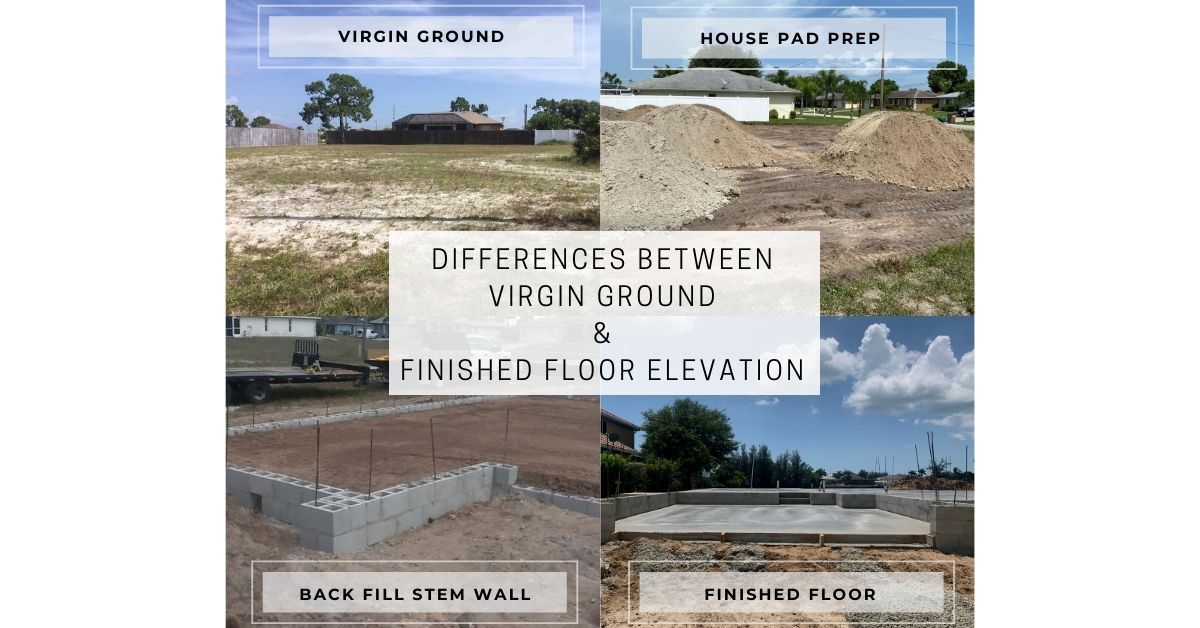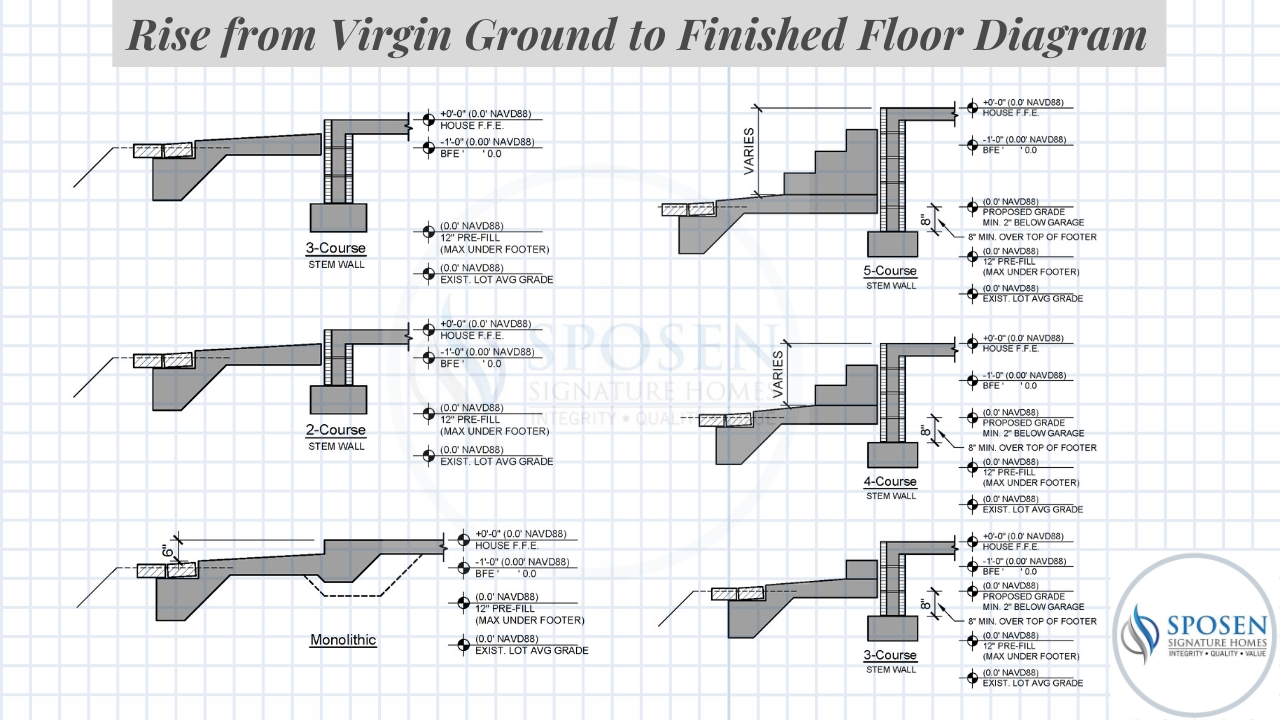When building a home every lot has unique elevation attributes based on it’s location. Before you can build the home of your dreams, preparations need to go into the lot you have selected to build on. Estimating the costs to take a lot from its existing elevation to the required finished floor elevation (FFE) is extremely important to determine the feasibility to build a new construction home within your allotted budget. Before being able to understand the elevation, it is important to understand some of the terms used.
Virgin Ground
When you first purchase a lot, the existing elevation is called “virgin ground.” Virgin ground refers to land not cultivated before. The land is in its natural form and the builder is working off its existing elevation conditions.
To build on a lot the virgin ground is scraped to remove any organic material which could impede the foundation of the home. Organic materials (grass, roots, etc.) decompose overtime so it is important to remove them so that the home has a solid foundation to be built upon. This process can remove up to 6” from the virgin ground depending on the location and preexisting conditions of the lot.
finished floor elevation
The finished floor elevation (FFE) is the height at which the concrete slab for the 1st floor living area of the home needs to be at based on Florida Emergency Management Agency (FEMA) and specific land development code requirements. The FFE height requirement is determined based on either the flood zone or different elevations of the lot, adjacent lots, and the road. Elevations are found on a boundary survey with specific grade elevations around the lot. The builder uses the boundary survey to determine the path to take during the first steps in your home’s construction. These elevations ensure that rainwater runs away from your home and into existing swales and drains along the road.
Rise from virgin ground to finished floor
Depending on the rise needed to bring the lot’s existing elevation up to the required FFE, the engineer who creates the site plan will use a monolithic slab or stem wall construction. Lower rises typically use monolithic slabs, where higher rises will use stem wall construction. The various stem wall construction options are related to the number of “courses”. Courses are a row of block; each course is 8” so for each course of stem wall you get an 8” rise. (See examples of each in diagram below).
new rules
Nearly all the lots in our area require fill dirt to be brought in to acquire FFE height. Recent changes from the City of Cape Coral has all but eliminated the ability to use monolithic slab construction. The new restrictions limit the amount of fresh fill dirt to 12” below the footer. This new restriction lessens the risk of older homes that may have been built at lower grades than required today to get additional run off from abutting properties.
Dropping the Garage Floor
When excessive rise is needed it may be necessary to drop the garage floor to meet the side swale requirements. When this happens, a landing and stairs are added in the garage to get from the interior of the home to the lowered garage floor. Depending on the number of stairs needed a safety railing may be required.
In addition, hydrostatic vents are required in the garage when its FFE is below the base flood elevation (BFE) and only if in a flood zone. The use of hydro static vents allows water to flow unimpeded in and out of the space without damaging the walls’ integrity.
Conclusion
With all the various factors affecting the development of a lot, it is important to have a preliminary lot inspection performed on your property to fully understand the amount of resources required to prep it for new home construction. At Sposen, we perform a drive by lot inspection prior to each home build to better estimate these building costs before a contract is signed. Having built hundreds of homes in the area, we have procedures in place to give accurate estimates to meet all required building and elevation codes in the most effective way.


